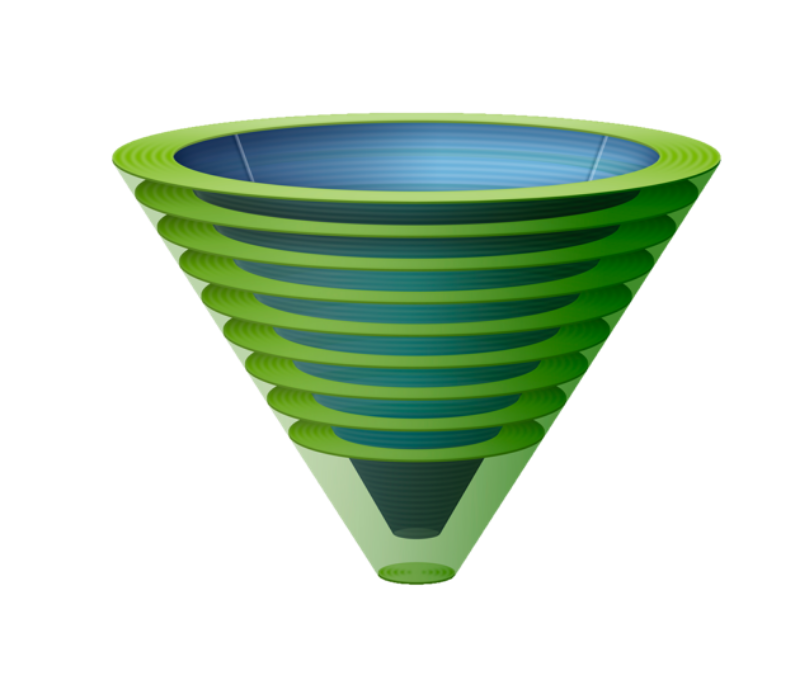DEfinition
The concept of 'transition' was developed by the Australian and New Zealand College of Anaesthetists (ANZCA) Airway Management Working Group in their transition document (right).
The Vortex Approach describes transition as "the phase of care leading up to and including the potential initiation of Neck Rescue". This description is broader than that used by ANZCA, in recognition of the fact that there are both practical and psychological barriers to puncturing the anterior neck that must be negotiated even after a "committed declaration of a CICO event". This revised description also reflects the fact that the occurrence of transition should be able to be identified prospectively and that in most cases it will not result in a declaration of CICO.
“the shift in focus from attempts to enter the Green Zone via the upper airway lifelines, to achieving this via Neck Rescue, should be a process rather than a pivot”
According to the Vortex Approach, transition commences with the onset of priming and concludes with entering the Green Zone using a definitive airway technique. In this context, the term 'definitive' refers to an airway satisfying all the goals of airway management (both primary and secondary) in the particular context for which airway management was undertaken, such that conversion to another technique is not anticipated. According to the circumstances a definitive airway may potentially be achieved via Neck Rescue or using one of the upper airway lifelines. It does not necessitate intubation of the patient. What constitutes an appropriate definitive airway in a particular situation will vary. If for example, intubation or withdrawal have been identified as the required endpoint to airway management in a particular situation, transition does not conclude with entry to the Green Zone using a supraglottic airway and the team should remain primed until entry to the Green Zone is secured using the appointed definitive airway.
Transition is a key concept in management of the challenging airway which acknowledges that the shift in focus from attempts to enter the Green Zone via the upper airway lifelines, to achieving this via Neck Rescue, should be a process rather than a pivot - occurring over a period of time instead of at an instant in time.
ELEMENTS
The Vortex Approach specifies four elements that are required for effective transition:
Prevention: for transition to be effective it must only culminate in the initiation of Neck Rescue when absolutely necessary. Prevention of a CICO event depends on both maximising opportunities to establish airway alveolar oxygen delivery via the upper airway lifelines as well as avoiding precipitating loss of the ability to achieve alveolar oxygen delivery when this has previously been established. The process of prompting for optimisation of the three upper airway lifelines specified by the Vortex addresses the former aspect and the Green Zone addresses the latter.
Priming: the process of priming for Neck Rescue outlined above is initiated in response to acknowledgement of the diminishing likelihood of success at achieving alveolar oxygen delivery via any of the upper airway lifelines an increasing possibility (yet still not a probability in the vast majority of cases) of the potential need for Neck Rescue. Priming must occur in parallel with ongoing attempts to optimise success at the three upper airway lifelines of face mask, supraglottic airway and endotracheal tube. The Priming Status tool is used by the Vortex Approach to facilitate priming.
Permission: clear recognition that a CICO event exists and declaration of its occurrence to the team contribute to clinician confidence that it is appropriate to perform this confronting procedure and thus their resolve to initiate Neck Rescue. The Vortex implementation tool facilitates permission for Neck Rescue by providing a defined endpoint to optimisations for each lifeline and enhancing team situational awareness of the occurrence of a CICO event.
Puncture: refers to the technical aspects of initiation and performance of Neck Rescue, including the ability to access the necessary resources (staff and equipment). While these technical aspects are not core areas of the Vortex Approach, it assists in addressing them through the process of clinical integration (such as use of the iconography of the Vortex Approach to make pre-packaged Neck Rescue kits more readily identifiable in a crisis) and by emphasising the importance of critical language (to ensure requests for equipment are clearly understood and are made using terminology that is consistent with the manner in which that equipment is labelled).
While the Vortex Approach addresses many aspects of these 4 elements, other factors also have significant contributions to make. In addition to the implementation tools provided by the Vortex Approach, successfully executing the transition process requires attention to all of the above elements using an integrated approach that addresses both technical and human factors in relation to training, planning, monitoring and equipment.


